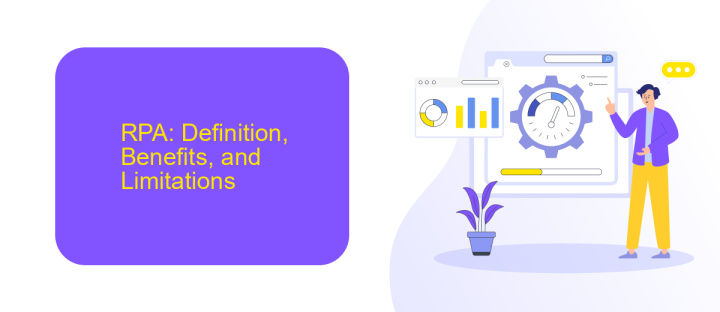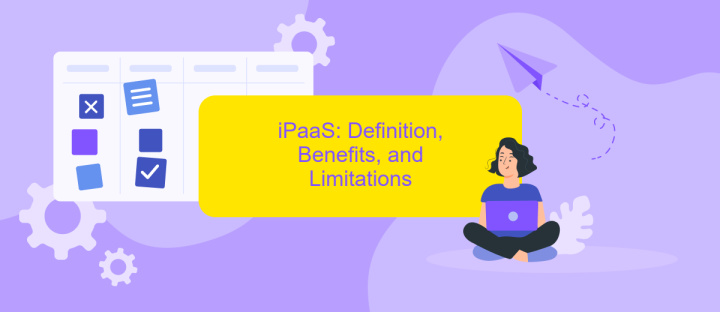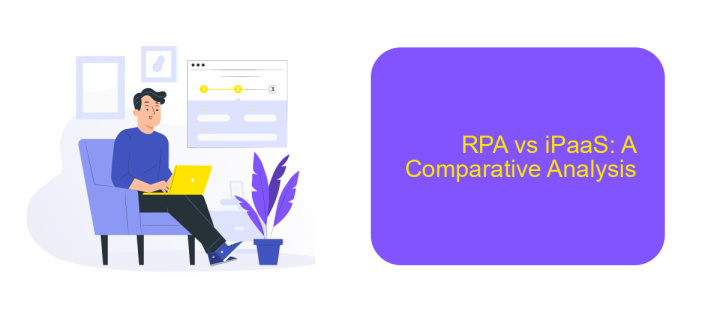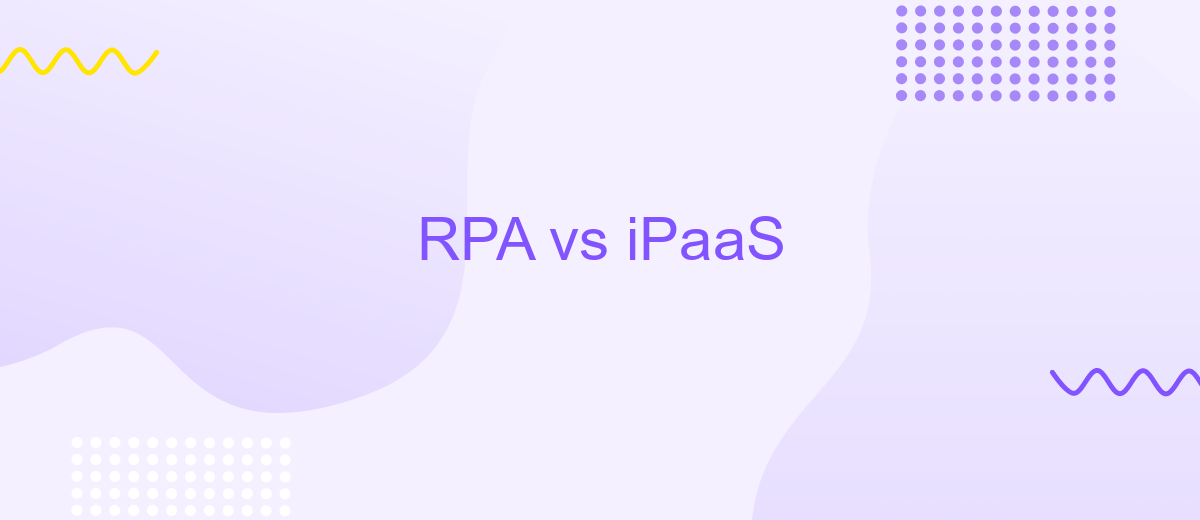RPA vs iPaaS
In today's rapidly evolving digital landscape, businesses are increasingly turning to automation to streamline operations and enhance productivity. Two prominent technologies in this domain are Robotic Process Automation (RPA) and Integration Platform as a Service (iPaaS). While both aim to optimize workflows, they serve distinct purposes and offer unique benefits. This article explores the key differences between RPA and iPaaS to help you make informed decisions.
Introduction
In today's rapidly evolving digital landscape, businesses are continually seeking ways to streamline processes and enhance efficiency. Two prominent solutions that have emerged to address these needs are Robotic Process Automation (RPA) and Integration Platform as a Service (iPaaS). Both technologies offer unique benefits and are widely adopted across various industries.
- RPA focuses on automating repetitive, rule-based tasks to reduce human intervention.
- iPaaS facilitates seamless integration between disparate systems and applications, enabling smoother data flow.
- Services like ApiX-Drive simplify the integration process, making it easier for businesses to connect various applications without extensive coding.
While RPA and iPaaS serve different purposes, they often complement each other in achieving operational excellence. Understanding the distinctions and synergies between these technologies can help organizations make informed decisions on which solution best fits their specific needs. This article delves into the key differences, benefits, and use cases of RPA and iPaaS, providing a comprehensive guide for businesses looking to optimize their workflows.
RPA: Definition, Benefits, and Limitations

Robotic Process Automation (RPA) is a technology that uses software robots to automate repetitive and rule-based tasks typically performed by human workers. These tasks can include data entry, invoice processing, and customer service inquiries. By mimicking human actions, RPA can significantly reduce the time and effort required to complete routine tasks, allowing employees to focus on more strategic activities. The benefits of RPA include increased efficiency, reduced operational costs, and improved accuracy in data handling.
Despite its advantages, RPA has certain limitations. One major drawback is its dependency on structured data and predefined rules, making it less effective for tasks that require human judgment or deal with unstructured data. Additionally, the implementation and maintenance of RPA systems can be complex and costly, particularly for small and medium-sized enterprises. While RPA excels in automating individual tasks, it may not be suitable for more complex workflows that require integration across multiple systems. In such cases, services like ApiX-Drive can be beneficial, offering seamless integration solutions that complement RPA by connecting various applications and automating data flows.
iPaaS: Definition, Benefits, and Limitations

Integration Platform as a Service (iPaaS) is a cloud-based service that enables the integration of various applications and data sources. It facilitates seamless communication between different systems, allowing businesses to automate workflows and improve efficiency. iPaaS solutions are designed to manage, govern, and integrate data from disparate sources, making it easier for organizations to streamline their operations.
- Scalability: iPaaS platforms can easily scale to accommodate growing data and application needs.
- Cost-Effectiveness: They reduce the need for extensive on-premise infrastructure, lowering operational costs.
- Flexibility: iPaaS supports various integration patterns and technologies, providing flexibility in connecting different systems.
- Improved Collaboration: By centralizing integration processes, iPaaS enhances collaboration across departments.
- Rapid Deployment: These platforms enable quick and easy deployment of integrations, accelerating time-to-market.
Despite its benefits, iPaaS has some limitations. It may require significant initial setup and configuration efforts. Additionally, data security and compliance concerns can arise when integrating sensitive information. Services like ApiX-Drive can simplify the integration process by offering user-friendly tools for connecting various applications and automating workflows, reducing the complexity typically associated with iPaaS implementations.
RPA vs iPaaS: A Comparative Analysis

Robotic Process Automation (RPA) and Integration Platform as a Service (iPaaS) are two powerful tools that businesses use to streamline operations and improve efficiency. RPA focuses on automating repetitive tasks through software robots, which mimic human actions. On the other hand, iPaaS provides a platform for integrating various applications and data sources, facilitating seamless data flow across systems.
While both RPA and iPaaS aim to enhance productivity, they serve different purposes and are suited for distinct scenarios. RPA is ideal for automating rule-based, repetitive tasks without the need for deep integration. Conversely, iPaaS is designed for complex integrations involving multiple applications and data sources, ensuring data consistency and real-time updates.
- RPA: Automates repetitive, rule-based tasks
- iPaaS: Integrates multiple applications and data sources
- RPA: Requires minimal coding knowledge
- iPaaS: Facilitates complex, real-time integrations
Choosing between RPA and iPaaS depends on the specific needs of your business. If your goal is to automate straightforward, repetitive tasks, RPA is the way to go. However, if you require robust integration capabilities, an iPaaS solution like ApiX-Drive can help you connect various services and automate data flows efficiently.
Choosing the Right Solution for Your Business
When deciding between RPA (Robotic Process Automation) and iPaaS (Integration Platform as a Service) for your business, it's crucial to evaluate your specific needs and objectives. RPA excels in automating repetitive, rule-based tasks, making it ideal for streamlining internal processes and reducing manual workload. On the other hand, iPaaS is designed to integrate various applications and data sources, enabling seamless data flow and connectivity across systems. If your primary goal is to enhance operational efficiency by automating routine tasks, RPA may be the more suitable choice.
However, if your business requires robust integration capabilities to connect disparate systems and facilitate data exchange, iPaaS could be the better option. Services like ApiX-Drive offer powerful solutions for setting up integrations without extensive coding knowledge, making it easier to synchronize data and automate workflows across multiple platforms. Ultimately, the right solution depends on whether your focus is on task automation or system integration. By thoroughly assessing your business requirements, you can make an informed decision that aligns with your strategic goals.
FAQ
What is the primary difference between RPA and iPaaS?
Can RPA and iPaaS be used together?
Which one should I choose for my business, RPA or iPaaS?
How does ApiX-Drive support automation and integration?
Is it necessary to have technical expertise to use iPaaS platforms like ApiX-Drive?
Routine tasks take a lot of time from employees? Do they burn out, do not have enough working day for the main duties and important things? Do you understand that the only way out of this situation in modern realities is automation? Try Apix-Drive for free and make sure that the online connector in 5 minutes of setting up integration will remove a significant part of the routine from your life and free up time for you and your employees.

